Horse Racing in Wallasey
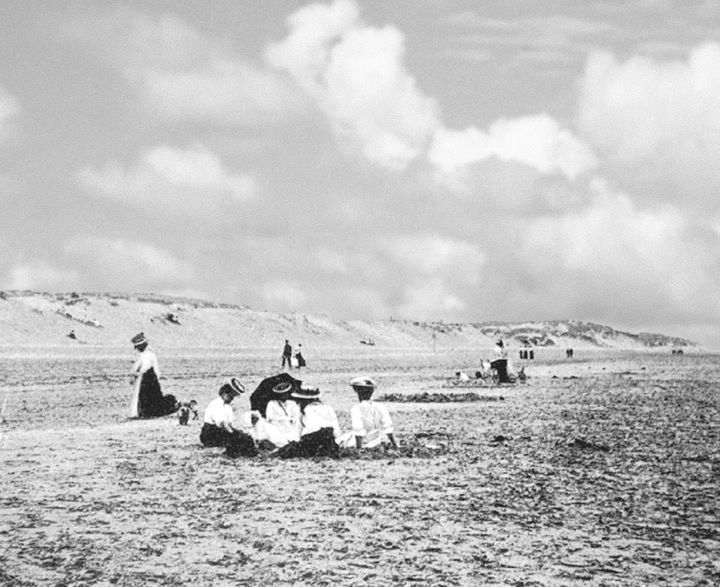
The Sands
One of the most famous races in the Horse Racing calendar is the Derby. But the origins of the race are to be found here at Leasowe Castle. The first "Gentleman's Racecourse" was established here. The actual year is unknown but must have been soon after 1593, when Leasowe Castle was erected. William Webb, writing in 1662, refers to the fairlands or plains upon the shores of the sea which for fitness for such a purpose allure the gentlemen and others oft to appoint great matches and venture no small sums in trying the swiftness of their horses.
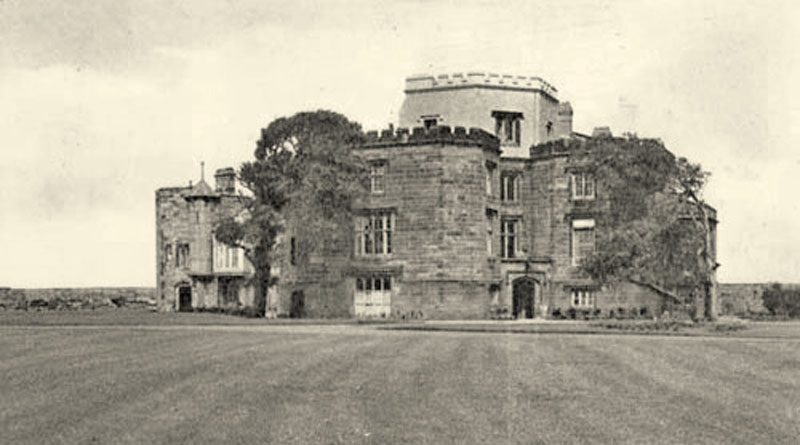
Leasowe Castle
In the autumn of 1682, the race meeting held here had an illustrious visitor and jockey in the person of the ill-starred Duke of Monmouth who, attended by many of his friends, was on a tour courting popularity in this part of England. On Sunday 10th September he arrived in Wallasey. Next day Monmouth went to Wallasey, and the day following he was joined there by the Mayor with a troop of forty horsemen, and a large concourse of people from Chester eager to see the running horses, and the Duke. The First Plate, value £60, was won by the Duke riding his own horse. Monmouth offered to lay £1000 on his horse, but no one would take him. Later, the Duke had two foot races with Mr Cutts of Cambridge, the first stripped, the second in his boots, both of which he won. The Duke, after the race, crossed over to Liverpool with his party. When the news came to Chester that he had steered his own horse to victory at Wallasey (though some hinted that it was by the contrivance of the gentlemen who rode against him) the populace were immensely elated, bonfires were lighted, the church bells rung, and nothing was heard in the streets but shouts of A Monmouth! A Monmouth! The Mayors house was illuminated and the Duke and his friends were entertained right royally.
In the Eaton Hall Account Books the following
entry occurs:
1st September, 1696. Peter Pemberton, a bill of charges att Wallasey at Juglers
match, £1.12.6
September, 1696. Paid a bill of charges at Wallasey when Meale ran with ye Lord
Ross his white horse Davies.
11th September, 1682, Monday. On Monday mid-day he started for Wallasey to be
present at the races next day.
The course, according to a map which still exists, seems to have extended for
nearly five miles, running from the village out towards the Castle and back
again, finishing near the present Wallasey Station.
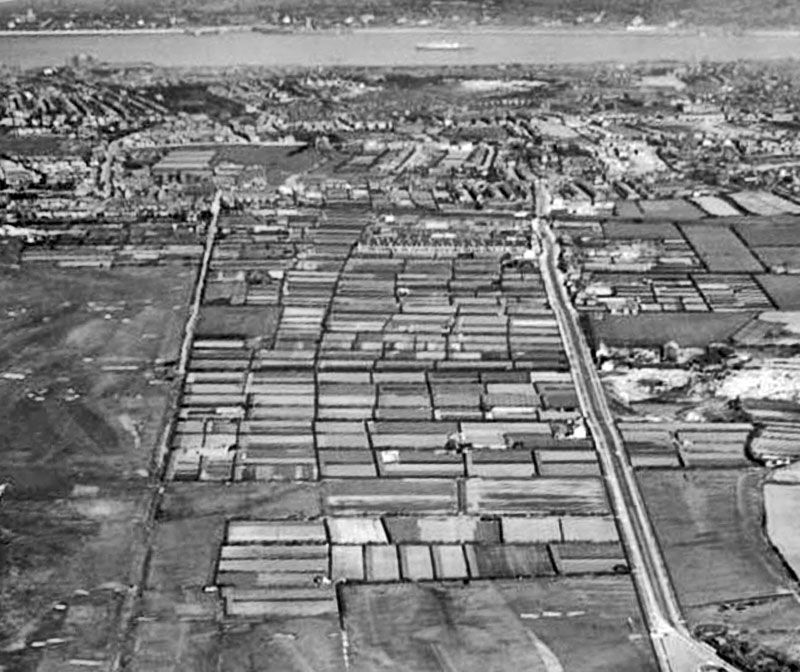
This is where the course ran, alongside the shore, to Wallasey station (as it is now) and back again. Wallasey stastion/bridge can just be seen
towards the top of the image along what is now Leasowe Road. Earlier racing was run along the sands below
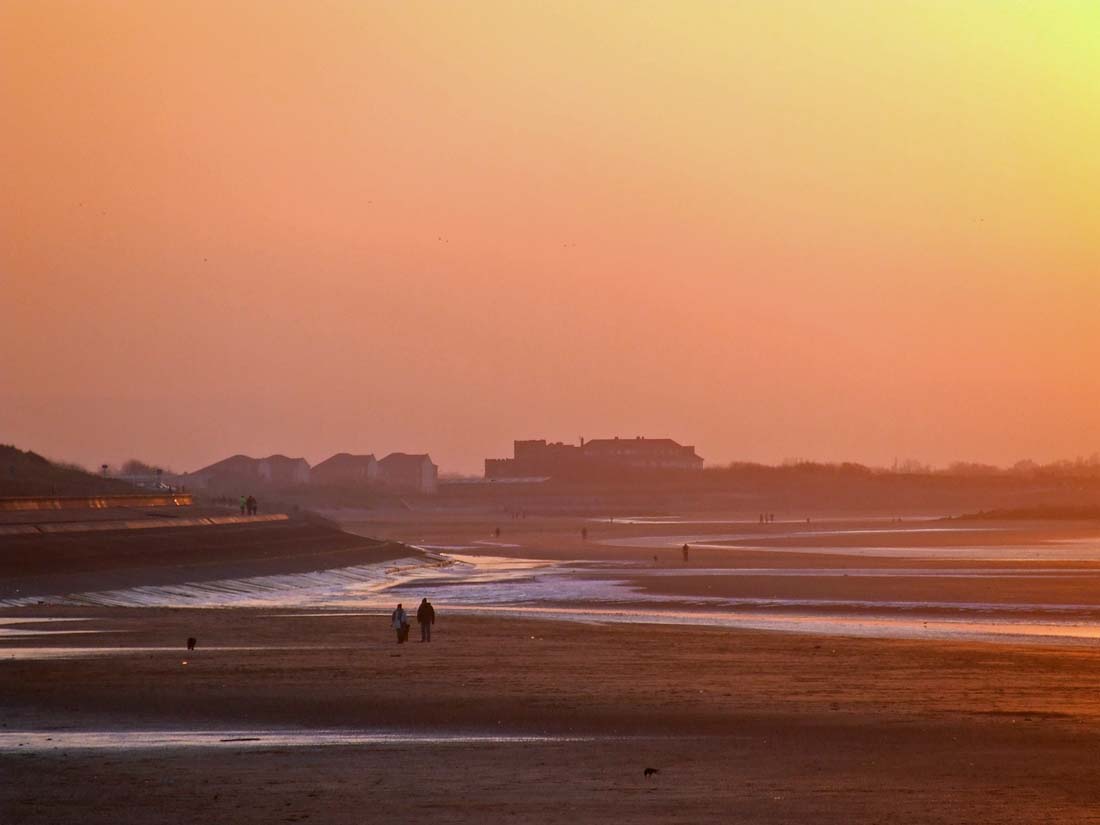
My image of Leasowe Castle and the sands
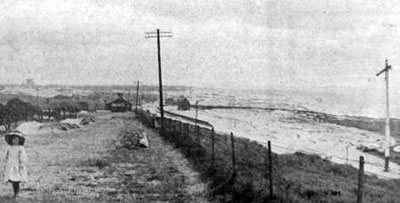
This image, although taken from the Warren Drive area, shows the expanse of sands at that time.
As the races were run in
heats, and a win could only be obtained by the first horse leading throughout
the last 240 yards, it sometimes happened that the distance had to be traversed
two or even three times. Forty years later the popularity of Wallasey had so far
increased that it is said that the most considerable stake in the kingdom was
run for over this course. The names of the winners give some idea of the
importance of the event. We find among them the Duke of Devonshire winning in
1725. About this time Lord Molyneux transferred his training stud to Wallasey.
Lord Gower was a winner in 1723 and 1730, the Duke of Ancaster in 1728, and Sir
Richard Grosvenor in 1724, 2726 and 1727. Blundell of Crosby, under the date
February, 1727, records in his Diary (p. 223): Coz. Butler went to Wallosy Race
where Sir Richard Grosvenors horse beat a Black Horse of My Lord Molyneuxes. Was
this a favourite that gave the name to the Black Horse Inn which on a carved
stone bears the initials and "D with W.M. beneath it then 1722" and was it
built to accommodate the gentlemen and others referred to by Webb?
About 1732 the more important events were discontinued, though for some years
afterwards a race was run at Newmarket called The Wallasey Stakes. But if the
great race was no longer run on the Leasowes, other events took place there
during the latter half of the eighteenth century, as is evident from some
inscriptions cut on the old door of the Racing Stable which stood in Wallasey
Village, on the site of Sandiways Road. When it was built is not known, but
probably between 1600 and 1642, possibly by William, sixth Earl of Derby. Soon
after the latest of the dates recorded on the old door, namely 5 April 1785,
Earl Grosvenor sold the stables and the adjoining land to one John Zewill, whose
ownership was commemorated by the initials M and IZ beneath then the date 1787
cut in stone over one of the doorways. Here he and his wife are said to have
lived for many years. The place afterwards came into the possession of someone
of the name of Wotherspoon, who sold it to Mr Barton, who inhabited part of the
house and intended, it is said, to repair the whole of it, but did not owing to
the expense it would involve. At that time it was known as Sandfield Hall
popularly called the Kings House. After Mr Bartons death in 1851 it was
allowed to fall into decay until demolished in 1895. The old oak was utilised in
building some of the houses on the site, but the old door above referred to was
presented to the Historic Society of Lancashire and Cheshire, and afterwards
housed in the Liverpool Museum, only to be destroyed during the war by bombing.
It was given by Mr Madders, one of the owners of the property, in 1892. It was
an iron-studded oak door, showing marks of four horseshoes. In the centre of
each of the marks the following inscriptions were cut into the wood:
Black Slave won 200 guins at Walazey 1778
Ingram Esqr. Tripod won 50 at Conway 176 - Ingram Esqr. Lady Day won 200 gs. at Preston 1767.
Smiling Molly won 5 Walazey 1770 - 50 at Preston
Upon each mark, until within a few years of 1893, a small, beautifully-made racing horseshoe was nailed. All that is left in Wallasey to remind us of its bygone glories as a racing centre is the Black Horse Inn. The racing stables have passed away, and even Jockey Lane has been rechristened Sandcliffe Road. Williamsons Liverpool Advertiser for August 1792 mentions that some horse races were to be run at Seacombe on August 20, 21 and 22. Three prizes were offered of £10 each, the second a subscription purse by five gentlemen of £10 each, and the third a sweepstake by ten gentlemen of £5 each. All horses to be entered at the house of Mr Smith, Seacombe (Lord of the Manor of Poulton maybe ?).
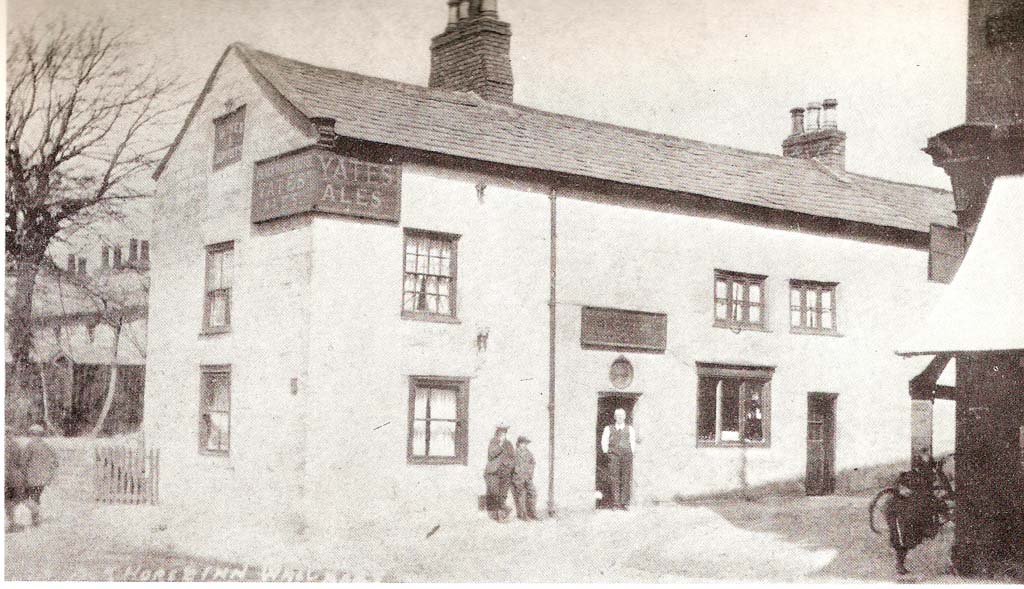
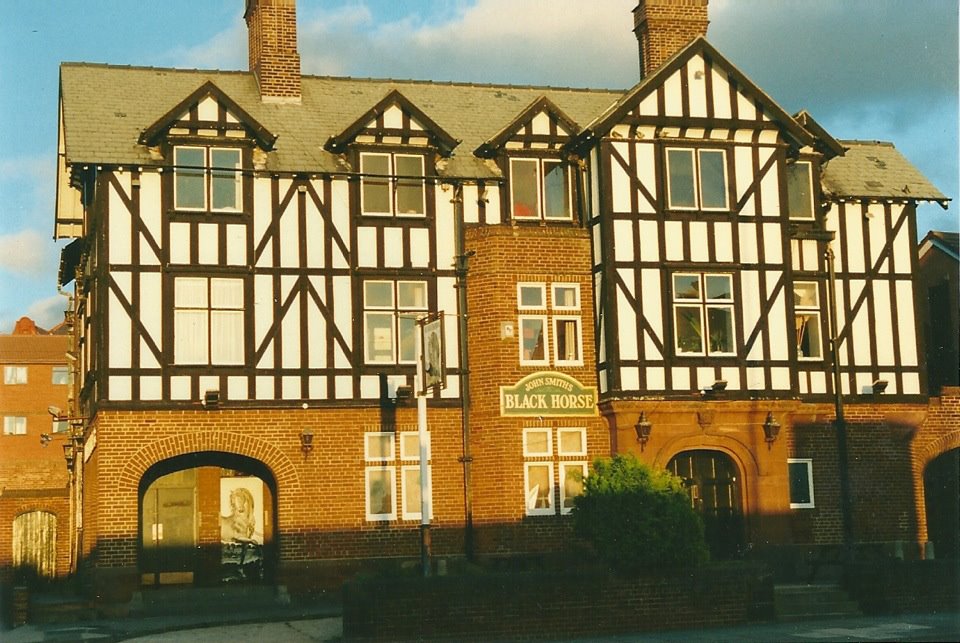
Black Horse Inn as it is was and is now. The image on the left is obviously well after the racing!
after the original part of Leasowe Castle was built in 1593. William Webb, writing in I662, refers to the ‘fairlands or plains upon the shores of the sea which for fitness for such a purpose allure the gentlemen and others oft to appoint great matches and venture no small sums in trying the swiftness of their horses.’
The Rev. Richard James, B.D., Fellow of Corpus Christi College, Oxford, in his Iter Laneastrense, a poem written in 1636, alludes to the course on Wallasey Leasowes thus:
Austin’s voice is true,
Empire condignly was to Roman: due.
Our ways are gulphs of dirt and mire which none
Scarce ever pars in summer without moan,
Whilst theirs through all the world were no less free
Of passage then the Race of Wallisee.
A local breach of promise case was heard in 1637} when Ann Stanley sued Richard Hockenhull. The fair Ann was evidently a careful soul for she produced a list of loans and gifts such as:
Item. Forty shillings he sent for at the Horse Course at Wallisey when my lord Saville’s Horse lost.
And again:
Eggs were delivered unto him when he was sicke, and marmolet, all which cost money.
In the autumn of 1682, the race meeting held here had an illustrious visitor and jockey in the person of the ill-starred Duke of Monmouth who, attended by many of his friends, was on a tour courting popularity in this part of England. On Saturday, 9th September, about six o’clock in the evening, he arrived at Chester amid the acclamations of the people. On Sunday he stood godfather to the daughter of Mr George Mainwaring, then Mayor of Chester, naming her Henrietta, no doubt after Lady Henrietta Wentworth to whom he was deeply attached. Next day Monmouth went to Wallasey, and the day following he was joined there by the Mayor with a troop of forty horsemen, and a large concourse of people from Chester eager to see the running horses, and the Duke. The First Plate, value £60, was won by the Duke riding his own horse. Monmouth offered to lay £ 1,000 on his horse, but no one would take him. Later, the Duke had two foot races with Mr Cutts of Cambridge, the first stripped, the second in his boots, both of which he won. The Duke, after the race, crossed over to Liverpool with his party.
When the news came to Chester that he had steered his own horse to victory at Wallasey (though some hinted that it was by the contrivance of the gentlemen who rode against him) the populace were immensely elated, bonfires were lighted, the church bells rung, and nothing was heard in the streets but shouts of ‘A Monmouth! A Monmouth!’ The Mayor’s house was illuminated and the Duke and his friends were entertained right royally. Amid all this hubbub Monmouth was not forgetful of the little maiden whose sponsor he had been two days before, and to whom he now presented the £60 he had won at Wallasey, enclosing the pieces in a silver box of his own.“
In the Eaton Hall Account Books the following entry occurs:
1st September, I696. Peter Pemberton, a bill of charges att Wallesey at Jugler’s match, £1.12.6.
September, 1696. Paid a bill of charges at Wallasey when Meale ran with ye Lord Ross his white horse Davies.
11th September, I682, Mondqy. On Monday mid-day he started for Wallasey to be present at the races next day.
The course, according to a map which still exists, seems to have extended for nearly five miles, running from the village out towards the Castle and back again, finishing near the present Wallasey Station. As the races were run in heats, and a win could only be obtained by the first horse leading throughout the last 240 yards, it sometimes happened that the distance had to be traversed two or even three times. When all this is considered our respect for the power of endurance shown by the Duke on this occasion is certainly enhanced.‘ Forty years later the popularity of Wallasey had so far increased that it is said that the most considerable stake in the kingdom was run for over this course. The names of the winners give some idea of the importance of the event.
We find among them the Duke of Devonshire winning in 1725. About this time Lord Molyneux transferred his training stud to Wallasey. Lord Gower was a winner in I723 and 1730, the Duke of Ancaster in 1728, and Sir Richard Grosvenor in 1724, 1726 and I727. Blundell of Crosby, under the date February, 1727, records in his Diary (p. 223): ‘Coz. Butler went to Wallosy Race where Sir Richard Grosvenor’s horse beat a Black Horse of My Lord Molyneuxes.’ Was this a favourite that gave the name to the Black Horse Inn which on a carved stone bears the initials and date W.M. 1722 and was it built to accommodate ‘the gentlemen and others’ referred to by Webb?
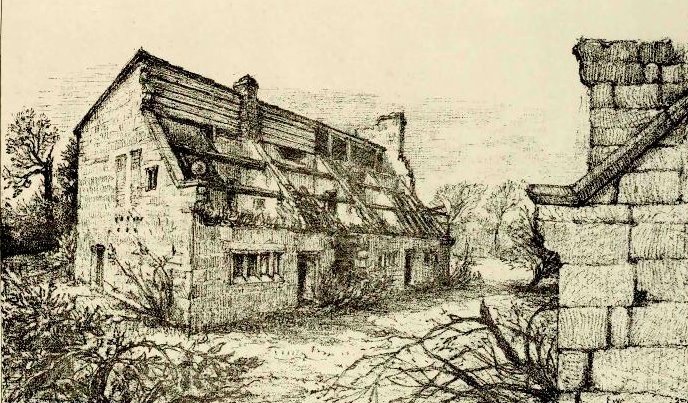
The Stables
The old oak was utilised in building some of the houses on the site, but the old door above referred to was presented to the Historic Society of Lancashire and Cheshire, and afterwards housed in the Liverpool Museum, only to be destroyed during the war by bombing. It was given by Mr Madders, one of the owners of the property, in 1892. It was an iron-studded oak door, showing marks of four horseshoes. In the centre of each of the marks the following inscriptions were cut into the wood:
Black Swan won 200 guins at Wallazey 1778
Ingram Esqr. Tripod won 50 at Conway 176?
Ingram Esqr. Lady Day won 200 guins at Preston 1767
Smiling Molly won 5? Wallazey 1770 50 at Preston
Upon each mark, until within a few years of 1893, a small, beautifully-made racing horseshoe was nailed. All that is left in Wallasey to remind us of its bygone glories as a racing centre is the Black Horse Inn. The racing stables have passed away, and even Jockey Lane has been rechristened Sandcliffe Road. Williamson’s Liverpool Advertiser for August I792 mentions that some horseraces were to be run at Seacombe on August 20, 21 and 22. Three prizes were offered of £10 each, the second a subscription purse by five ‘gentlemen’ of £10 each, and the third a sweepstake by ten ‘gentlemen’ of £5 each. All horses to be entered at the house of Mr Smith, Seacombe (Lord of the Manor of Poulton?). It goes on to say that ‘an ordinary’ will be provided every day for ‘gentlemen’ and a ball every evening for the ‘ladies’, but no provision appears to have been made for the entertainment of the ‘five subscribers.’
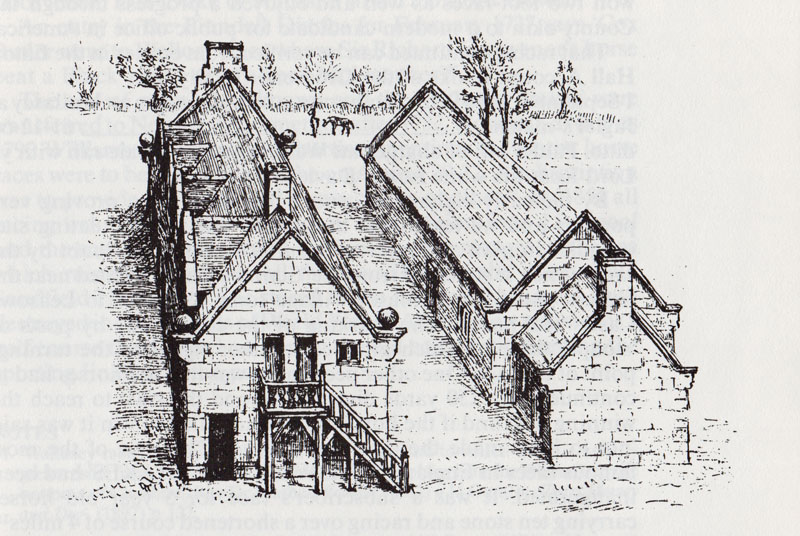
Another view of the racing stables
|
Thursday 6th May 1723 Unnamed horse owned by the Duke of Ancaster Thursday 4th May 1724 Shagg owned by Sir Richard Grosvenor Thursday 3rd May 1725 Mermaid owned by The Duke of DevonshireThursday 2nd May 1726 Grey Wynn owned by Sir Richard Grosvenor Thursday 1st May 1727 Spot owned by Sir Richard Grosvenor Thursday 6th May 1728 Gentleman owned by the Duke of Ancaster Thursday 5th May 1729 Nanny owned by Mr Egerton Thursday 4th May 1730 Unnamed chestnut horse owned by Lord Gower Thursday 3rd May 1731 Crab owned by the Duke of Ancaster Thursday 1st May 1732 Driver owned by the Duke of Ancaster The final meeting took place on Tuesday 5th April 1785 |
|
| Course today |
Today the old racecourse is covered by the Leasowes Golf Course, with Leasowe Castle to the West of the course and allotments to the east before Wallasey Village. |